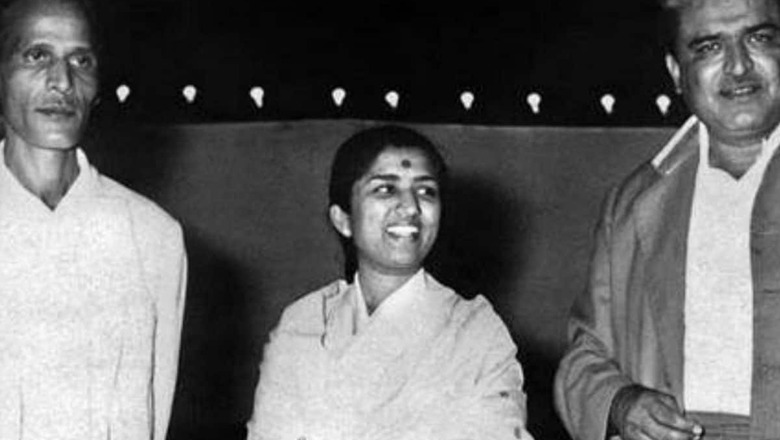
views
HAPPY REPUBLIC DAY 2023: Known to have moved the then prime minister Jawaharlal Nehru to tears, the soulful Ae mere watan ke logon ranks highly as one of the most loved patriotic songs. India has used the iconic song at numerous national events since it was first performed live by legendary playback singer Lata Mangeshkar on Republic Day back in 1963. Simply translated to ‘O people of my land’ (Ae mere watan ke logon), the song was a tribute to fallen soldiers of the Sino-Indian War of 1962 and was performed only two months later.
Penned by national poet Kavi Pradeep and composed by C Ramchandra, the song has stood the test of time. It replaced Mahatma Gandhi’s favourite Christian hymn, Abide with me, in the beating the retreat ceremony on January 29 last year. Just as the hymn was played at the end of the ceremony, this patriotic melody too will be played at the same time.
The decision to drop the equally iconic Abide with me is being seen as part of an effort to further “Indianise” the military, including its tunes, training literature, traditions, customs and other practices, some of which were drawn from the British era.
Pradeep, ‘Rashtra Kavi’ and master of the patriotic song
The masses were deeply hurt by the damage China had inflicted on India in 1962 war. The devastation and deaths took a toll on Pradeep, too, who then wrote Ae mere watan ke logon. While distinguished personalities — then president S Radhakrishnan and Nehru — were present alongside other Hindi film industry stalwarts, Pradeep was not invited to the first live performance of the song.
Born Ramchandra Narayanji Dwivedi on February 6, 1915, near Ujjain, Pradeep displayed his talent as a patriotic writer from his early days and went to write close to 1,700 poems and songs for 72 films. The poet, who was a teacher, let his pen do the talking even as he was censored by the British for his lyrics. He adopted the the nom de plume Pradeep.
Pradeep, however, was first noticed after the patriotic song Chal chal re naujawan from Bandhan (1940) became widely popular. But it was the song, Door hato ae duniyawalon, three years later that catapulted him to national fame.
As for his crowning glory Ae mere watan…, it was producer Mehboob Khan who approached the poet to write an opening song for a fundraiser to which he agreed. Once the song was ready, he roped in Mangeshkar and Ramchandra, according to a report in NDTV.
“Nobody can make you patriotic. It’s in your blood. It is how you bring it out to serve the country that makes you different,” the report quoted Pradeep as saying in an old interview.
Before his death in December 1998, the beloved poet was honoured with the 1997 Dadasaheb Phalke Award.
C Ramchandra, unsung hero and rhythm king
Having scored over a 100 films in the late 40s, 50s and 60s, very few know C Ramchandra as the composer of Ae mere watan ke logon. The prolific Bollywood composer was known for his songs with Mangeshkar, so it was only natural for Pradeep to approach him for the composition.
Ramchandra and Mangeshkar are known for their duets Kitna haseen hai mausam in Azaad (1955) and Shola jo bhadke in Albela (1951). Known best for his career-defining album Anarkali (1953), Ramchandra also was the occasional playback singer besides being a full-time music director.
Born Nahar Chitalkar in Maharahstra’s Ahmednagar district in 1918, he trained in classical music under Pandit Vinayakrao Patwardhan of the famed Gandharva Mahavidyalaya and later under Pandit Shankarrao Sapre.
He was known to be experimental in his approach to music, introducing a “jazzy” touch with the use of the alto saxophone in combination with guitar, harmonica and clarinet. He was influenced by American jazz clarinetist Benny Goodman. Ramchandra used a combination of ragas but his favourite was Bageshri due to its “simplicity”.
Read all the Latest India News here




















Comments
0 comment